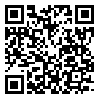Volume 76, Issue 10 (January 2019)
Tehran Univ Med J 2019, 76(10): 665-671 |
Back to browse issues page
Download citation:
BibTeX | RIS | EndNote | Medlars | ProCite | Reference Manager | RefWorks
Send citation to:



BibTeX | RIS | EndNote | Medlars | ProCite | Reference Manager | RefWorks
Send citation to:
Mosadeghrad A M, Pourreza A, Akbarpour N. Economic burden of autism spectrum disorders in Iran. Tehran Univ Med J 2019; 76 (10) :665-671
URL: http://tumj.tums.ac.ir/article-1-9278-en.html
URL: http://tumj.tums.ac.ir/article-1-9278-en.html
1- Department of Health Management and Economics, School of Public Health, Health Information Management Research Center, Tehran University of Medical Sciences, Tehran, Iran.
2- Department of Health Management and Economics, School of Public Health, Tehran University of Medical Sciences, Tehran, Iran.
3- Department of Health Management and Economics, School of Public Health, Tehran University of Medical Sciences, Tehran, Iran. ,neda.akbarpour88@gmail.com
2- Department of Health Management and Economics, School of Public Health, Tehran University of Medical Sciences, Tehran, Iran.
3- Department of Health Management and Economics, School of Public Health, Tehran University of Medical Sciences, Tehran, Iran. ,
Abstract: (5465 Views)
Background: The prevalence of autism spectrum disorder (ASD) as a child neurodevelopmental disorder has increased significantly during the past 3 decades worldwide and in Iran. This chronic disease does not cause premature death and there is no definitive treatment. Thus, the cost of ASD is extremely heavy and overwhelming. The purpose of this study is to calculate the economic burden of ASD in Iran.
Methods: A cross-sectional descriptive-analytic study was conducted to calculate all-important ASD costs. Two hundred and ninety autism patients in Tehran participated in this study in 2017 with the support of Tehran University of Medical Sciences (TUMS). A valid and reliable questionnaire was used to estimate direct medical costs, direct non-medical costs and indirect costs.
Results: The annual economic burden of ASD is estimated to be 223,561,841 Rials ($6,883 2014 USD) per patient in Tehran, Iran in 2017. Approximately 32%, 52% and 16% of the total cost were direct medical costs, direct non-medical costs, and indirect costs. The average ASD direct cost was $5,765 of which 38% was direct medical costs and 62% was direct non-medical costs. The average annual ASD direct medical cost was $2,215 per patient of which 70%, 16% and 7% were related to rehabilitation, medicine and doctor visit costs. The average annual ASD direct non-medical cost was $3,550 per patient of which 35% was the cost of parents’ immigration to Tehran to receive health care services. The average annual ASD indirect cost for productivity loss from unemployment or reduced work productivity was estimated at $1,118. The largest cost component was parents’ productivity loss due to caregiving (70%).
Conclusion: Autism imposes substantial direct and indirect economic effects on patients and their families. Hence, health policy makers must take the most effective measures to make best use of scarce societal resources, to reduce the cost of the disease for patients and their families and subsequently, reduce its psychosocial burden.
Methods: A cross-sectional descriptive-analytic study was conducted to calculate all-important ASD costs. Two hundred and ninety autism patients in Tehran participated in this study in 2017 with the support of Tehran University of Medical Sciences (TUMS). A valid and reliable questionnaire was used to estimate direct medical costs, direct non-medical costs and indirect costs.
Results: The annual economic burden of ASD is estimated to be 223,561,841 Rials ($6,883 2014 USD) per patient in Tehran, Iran in 2017. Approximately 32%, 52% and 16% of the total cost were direct medical costs, direct non-medical costs, and indirect costs. The average ASD direct cost was $5,765 of which 38% was direct medical costs and 62% was direct non-medical costs. The average annual ASD direct medical cost was $2,215 per patient of which 70%, 16% and 7% were related to rehabilitation, medicine and doctor visit costs. The average annual ASD direct non-medical cost was $3,550 per patient of which 35% was the cost of parents’ immigration to Tehran to receive health care services. The average annual ASD indirect cost for productivity loss from unemployment or reduced work productivity was estimated at $1,118. The largest cost component was parents’ productivity loss due to caregiving (70%).
Conclusion: Autism imposes substantial direct and indirect economic effects on patients and their families. Hence, health policy makers must take the most effective measures to make best use of scarce societal resources, to reduce the cost of the disease for patients and their families and subsequently, reduce its psychosocial burden.
Type of Study: Original Article |
Send email to the article author
| Rights and permissions | |
 |
This work is licensed under a Creative Commons Attribution-NonCommercial 4.0 International License. |





